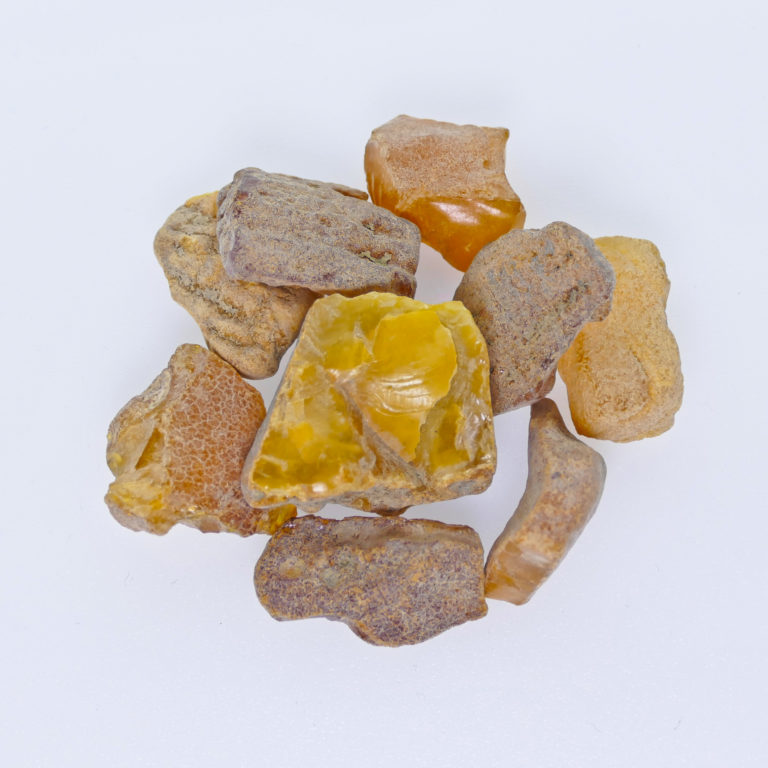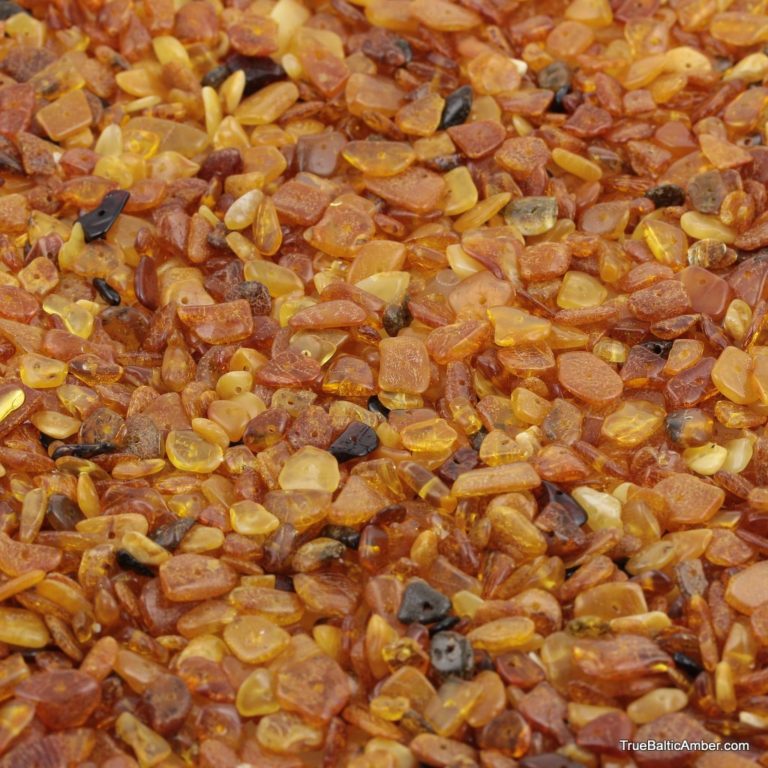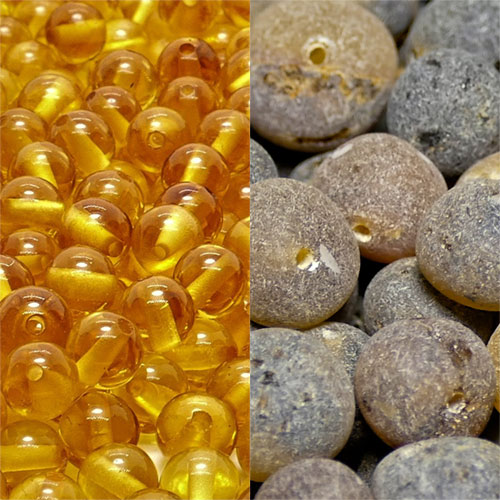Baltic amber colors
Baltic amber is usually yellow, bright yellowish. Its colour varies from white, yellow to brown, red. There is also green, blue, gray, even black amber.
Baltic amber is usually yellow, bright yellowish. Its colour varies from white, yellow to brown, red. There is also green, blue, gray, even black amber.
There are even more subtle shades, inter-combinations. Amber can be completely transparent or completely opaque. It is not always monochrome: there are combinations of two or more unique colours, shades, patterns – sometimes they form the finest art compositions. This is the reason, why amber is characterized by attractiveness, charm and uniqueness.
Baltic amber – resins of conifers with a little change. Fresh tree resins were transparent, bright yellowish. When resins became amber, the colour remained (transparent amber), however, it could change due to the changes that took place in resins:
* volatile elements, evaporated from resins, were roiling the resins (colour tones may vary from yellow to pure white);
* various impurities that were trapped into resins also could have impact on amber colour (blue, green, black, brown);
* During oxidation the color could darken, enrich (red, dark red, deep yellow).
Amber colour is changed by various impurities and its main structural elements – extremely small bubbles of turpentine gas. Located in a certain density and form, they split the light that we see as one or another colour.
Transparent (with yellowish shade). This colour of amber may be called a “primary” – this is the colour of fresh tree resins. There is about 10% of transparent amber, however, most of it are small pieces. Resins of transparent amber were flowing in shade, therefore, their volatile components – terpenes – evaporated slowly and gas bubbles did not roil the resins – amber remained transparent. If periodic flow of resins lay by layers, layered amber is formed. In such amber about 97% of all inclusions is found. Larger pieces of transparent amber are extremely rare and valuable. Transparency shade can vary from yellowish to dark red, depending on the degree of amber oxidation.
Red. Naturally red shade of amber is very rare (0.5%). This colour can have shades from orange to dark red. This colour appears, if amber remains in the air for a long time. It is affected by oxidation process. Amber, interacting with oxygen, oxidizes, i.e., slowly changes its color. Transparent amber is getting redder and redder, yellow and other colours enrich. This is a very long process: the change of colour tone can be observed after 50-70 years. Old amber is highly appreciated, since it is “mature”.
Yellow. It is the most common colour of amber (about 70% of all colours). Usually this amber is opaque, cloudy, its yellow shade varies. Resins were flowing from trees in the sunshine, therefore, volatile components of resins roiled the resins – formed thousands of small gas bubbles. These micro bubbles split the light and make yellow colour, visible by us. In a square millimeter there are up to 2500 gas bubble with a diameter of 0.05 -0.0025 mm. The more bubbles, the brighter the yellow shade is. Yellow amber is an integral part of women’s folk clothes.
White. White amber is very rare, it makes 1-2% of all amber. Usually this amber is characterized by variety of textures, “natural paintings”. It is also called “Royal” or “Bone”. It may have some chromatic insertions (yellow, black, blue, green, transparent amber), forming interesting patterns. Volatile materials of resins were evaporating intensively in the sunshine, therefore, a lot of micro gas bubbles formed in resins. In a square millimeter of white amber there can be up to 1 million of bubbles of diameter of 0.001 – 0.0008 mm. The more bubbles – the whiter the amber. The occurrence of chromatic insertions may be explained by the fact that resins, forming this piece of amber, did not flow at the same time: e.g., on a clouded day non-frothed resins were flowing, and then they mixed with frothed resins that flowed on the next day; or certain impurities had gotten into resins and they gave their shade to amber.
Blue. This is the rarest shade of amber. Blue colour of amber is the most appreciated; there is just about 0.2% of it. In most cases this shade is found in white amber. Blue amber formed, when Baltic amber got into Sambia Peninsula through rivers. If amber pieces fall into soil saturated with pyrite (FeS2), pyrite inclusions get into micro-gaps of amber. These inclusions split the light and make a blue shade. It is usually visible in a white background of amber.
Green. Green amber is also rare, there is about 2%. Transparent green amber is very interesting, since it is characterized by a “sugar structure”. Greenish amber formed, when a quite thick layer of transparent amber laid the pyrite impurities that had gotten into resins. Green transparent shade of amber is conditioned by optical effects, which are caused by pyrite impurities or other factors.
Black. It is quite common amber colour (about 15%), interesting by its naturalness. A major part of amber consists of tree barks and other plant residues, which are 50 million year old. Sometimes in black amber there is only about 10-15% of resins, and the rest – impurities.



